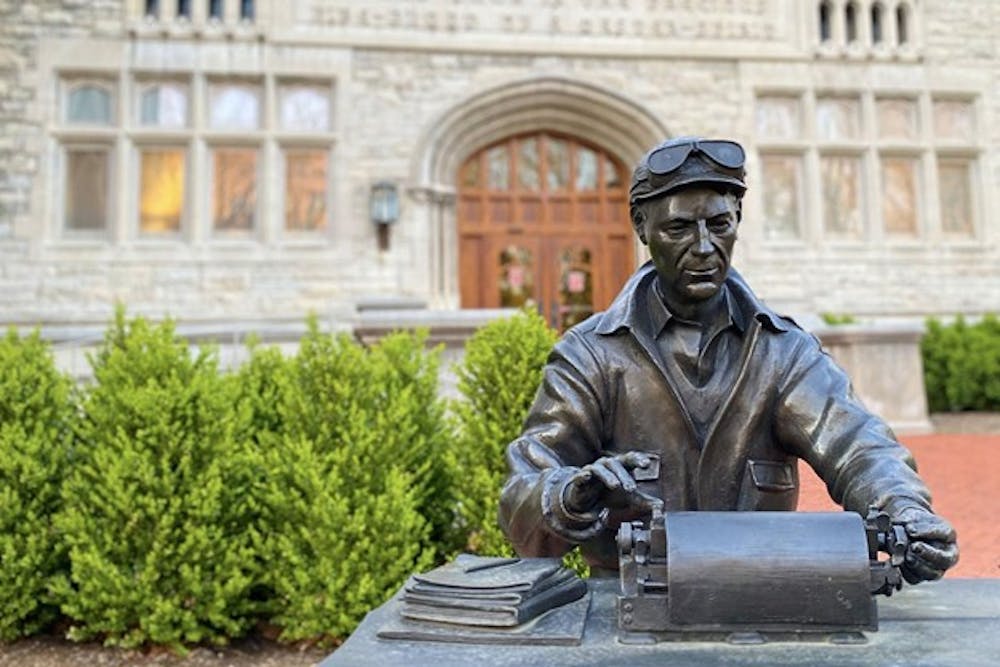Ernie Pyle, one of the most well-known journalists in history, is considered by historians as one of the most important figures to attend Indiana University. Pyle’s work shifted the course of journalism forever, focusing on the common person and telling their stories, famously including those of soldiers during World War II.
At IU, one can find Ernie Pyle Hall, journalism students who receive the Ernie Pyle Scholarship and a statue of Pyle outside Franklin Hall, home to the Media School and its journalism department.
That’s why it might shock Hoosiers to hear his first published article ran in the Purdue Exponent.
On Nov. 19, 1921, Pyle, then a city editor at the Indiana Daily Student, published his first byline in the Purdue Exponent. Its full title was “Indiana completes plans for Purdue rooters’ reception — special arrangements made to accommodate visitors in university cafeteria — Boilermakers to march — football declared king of day as series of homecoming pep-fests draw to an end.”
The article included no mention of the Old Oaken Bucket trophy, which would not appear until 1925. That weekend, Indiana football defeated Purdue 3-0 at Jordan Field, now the site of a parking lot outside the Indiana Memorial Union. It was Indiana’s only Western Conference victory that season.
Pyle documented the arrival of Purdue fans that weekend on specially scheduled trains from West Lafayette, Indiana, to Bloomington, a massive bonfire scheduled to take place in Dunn Meadow and a meeting between student leadership organizations at both schools.
“Open house is being held by all organization houses on the campus,” Pyle wrote, “and a cordial invitation is extended to all visitors to make themselves at home during their stay in Bloomington.”
Owen Johnson, associate professor emeritus of Journalism at IU, published the article in his book “Ernie Pyle at Home,” which documents much of Pyle’s work.
“Ernie Pyle hardly ever talked about his work or even more rarely analyzed it,” Johnson wrote in the book’s introduction. “Interviews with him usually produced little more than generalities. Yet he was a complete journalist with an insatiable curiosity.”




